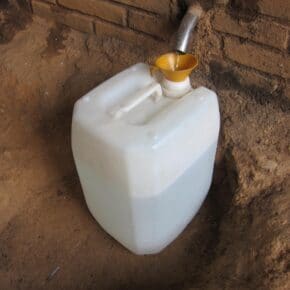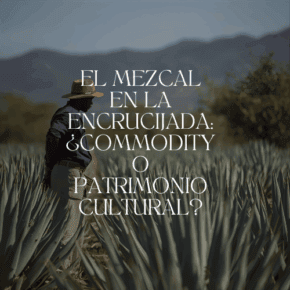When we think of mezcal and how it is made, we usually think of that classic image of a rustic palenque, or taberna or vinata, with an in ground oven, a tahona, some fermentation tanks and a couple of stills. But the world of mezcal is far more diverse than the images we see on social media, or for those lucky enough to see live and in person. Not only does production vary from region to region, it also varies from town to town. The demand for mezcal has fundamentally altered the landscape of how mezcal is produced, and the images we are accustomed to seeing reveal only part of a larger ecosystem.
Take volume mezcal. Often times when we talk about it, it’s focused on how it is used in the market, primarily for cocktails. It conjures ideas of large scale industrial operations, bloodless and lacking of humanity, and it can definitely be that. It can also be a “traditional” production with mezcal coming from multiple small or medium sized producers to make a larger batch, or from one large palenque that has scaled production by adding more – ovens, tanks, stills. Or it could be something in between. For better or worse, high volume mezcal is what drives the market and is usually how the majority of consumers experience mezcal. But exactly how are those higher volumes achieved in the production process?
A few things before we dive in. Everything we outline below is completely allowable under NOM-70, and specifically under the Artesanal Mezcal category. The production processes discussed can also create greater efficiencies which can lead to lower or more competitive pricing in the market, always a hot topic. This post is not about the inputs (agave, wood, water) or outputs (bagazo, viñaza, air pollutants), or any overall impact of volume mezcal production, it is strictly looking at production methods.
Vertical Model
Single palenque, expanded production
To meet increasing demand for mezcal, many palenques have built up, which is to say they have expanded the size of the palenque to make more mezcal. This can be done in two ways, they can duplicate the classic production process by adding more ovens, tahonas or shredders, fermentation tanks and stills – think parallel production lines. Del Maguey’s Vida production is a prime example of this. Or they can make things bigger: bigger ovens, bigger or more mechanized tahonas or shredders, bigger fermentation tanks, bigger stills. And of course there can be a mix of these.
Production processes can be traditional (wood fired in ground oven, wood fermentation tanks, wood fired stills) or a mix of traditional methods and modern methods like the incorporation of shredders and gas fired stills. Production also runs year round and in many cases, 24/7. These operations can be run by a single brand or they can produce for multiple brands.
Multiple palenques
Due to the increased demand for mezcal, some producers have expanded operations by building multiple palenques, particularly if they are producing for different brands. Each new palenque built remains under the control and management of the producer. One palenque might be the original family location that, due to size constraints of the property, cannot be built out. Additional palenques are then built to accommodate larger production runs for mezcal. These additional palenques may be a mix of traditional and modern processes as stated above.
Horizontal model
Growing with multiple producers
Some brands have opted to work with multiple producers in order to meet increasing demand. Rather than blend production from multiple producers, the lotes (lots or batches) are bottled separately and the producer, and lote (lot or batch) number, are identified on the label. This is primarily done with single variety agaves like Espadin as they are the workhorse agave of volume mezcal world. This type of model has enabled some producers to work with multiple brands as well as build out their family brand or create a brand. Think of Mal de Amor and Los Javis who produce for Ilegal Mezcal and have their own family brands.
The blended model
Being able to build a single palenque that produces more than 30,000 liters of mezcal requires a significant investment. Producers and brands alike have therefore opted to have a blended system, which is to say, literally blending mezcal from multiple producers in one palenque. Blending can be done with a final, or finished product, from multiple producers, or by doing a second distillation from ordinario, or first distillation, from multiple producers.
Producers can be part of cooperatives that pool their products together to create a larger volume product. Examples of these include Banhez and El Guel. In the case of UPADEC, the cooperative that produces Banhez, because the mezcal is from single distillation process using refrescadoras, the final product is made by blending the finished mezcal from the members and then bottling. In the case of El Guel, the cooperative members provide their ordinario which is then second distilled together and then bottled from a central palenque.
Brands or distilleries will also buy mezcal, usually ordinario, from individual producers to augment their own production of mezcal. They will then second distill the mezcal together at the palenque. It is therefore possible for a palenque to exponentially grow its production without having to add much additional production space, only space for additional or larger stills and storage tanks.
The blending stigma
Without doubt, blending is treated as the “dirty secret” of mezcal production. It is not an uncommon practice, much like the use of mechanical shredders was not uncommon when it too was treated like a problematic relative you hid in the attic. There seems to be an idea that the practice runs counter to everything that has been marketed about mezcal – one mezcal maker touching every step of a “rustic” process. It reminds me of the very successful coffee campaign by Colombia in the 70s that ended with the line “hand picked by Juan Valdez.” I grew up thinking that Juan Valdez was the hardest working person I had ever heard of and that he must have been exhausted all the time!
The fact is, that “rustic” component of mezcal making remains true. Selling ordinario, or finished mezcal, to a brand or distillery has provided economic benefit for many producers. Several I spoke with have been able to use the stable income from selling their ordinario to support their families, and others as a way to tide them over as they work on developing their own mezcal brand. Given how common the practice of blending has become in the production of mezcal, we think it is time for brands to be more transparent about those practices, especially since they are fully allowable under the NOM, and at end of the day it is the quality of the product that matters.
Final thoughts
Mezcal has always been a business and has been part of a bottom line of family income for hundreds of years. Given the increasing popularity of mezcal, we cannot criticize mezcaleros for recognizing opportunities and moving on them. And given the global world we live in it is only naturally for large companies to see the money making potential in mezcal and to capitalize on that. It is up to the consumers to decide what they like and want to support, and it is therefore even more important that they have greater understanding of what it is they are drinking, even if we have to let go of a few sacred cows along the way.












Leave a Comment